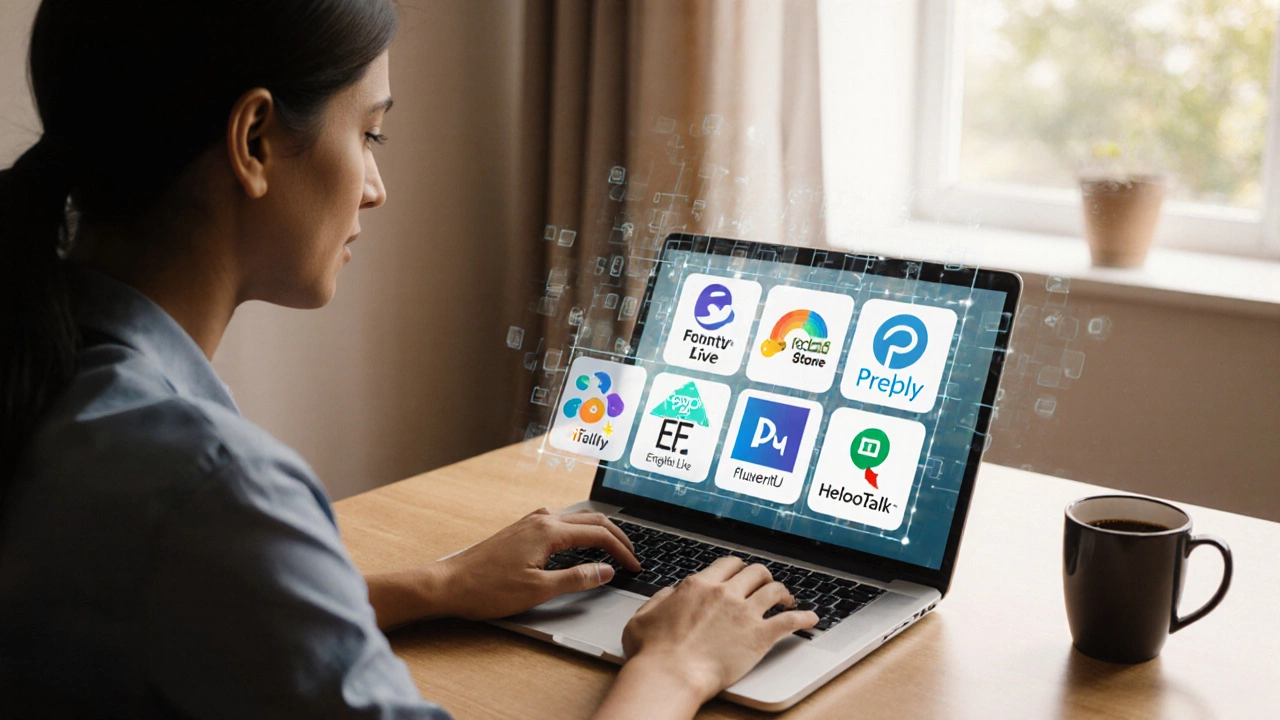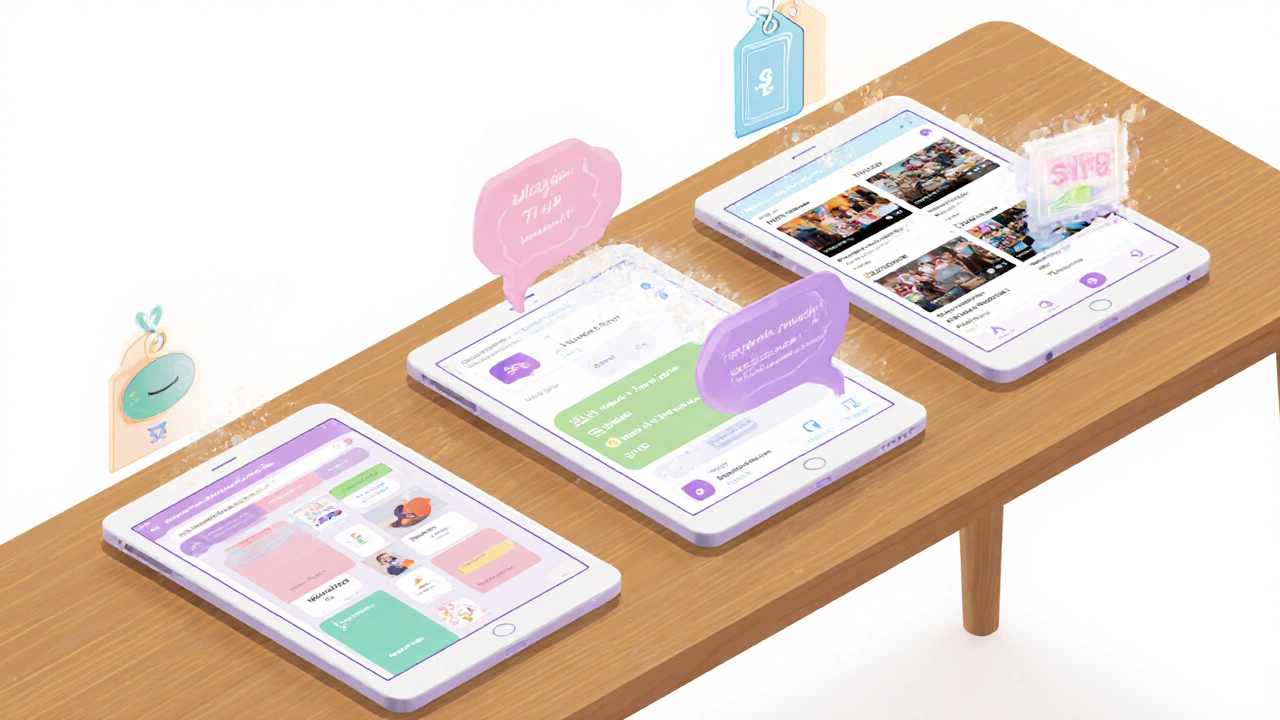
English Speaking Platform Recommender
Find Your Perfect English Practice Match
When you’re hunting for the English speaking platform a digital service that helps learners practice spoken English with native speakers, AI tools, or community partners, the choices can feel endless. You probably wonder which one actually delivers fluency without costing a fortune or demanding endless schedules.
How to Pick a Platform That Gets You Speaking Fast
Before we list the contenders, let’s set the criteria that separate hype from real results. Only a platform that meets these basics can claim to be the best English speaking platform for most learners.
- Live Interaction: Real‑time conversation with native speakers or high‑quality AI voices is the fastest way to build confidence.
- Personalized Feedback: You need correction on pronunciation, intonation, and grammar, not generic praise.
- Flexible Scheduling: Busy adults appreciate on‑demand lessons; students need after‑school slots.
- Pricing Transparency: Clear per‑minute or subscription rates prevent surprise bills.
- Progress Tracking: Dashboards that show speaking time, vocab growth, and confidence scores keep motivation high.
With those five pillars in mind, we can evaluate the market objectively.
Top English Speaking Platforms in 2025
Below are the most popular services that tick the boxes above. Each entry includes a brief microdata‑rich definition so search engines know exactly what you’re reading about.
iTalki a marketplace that connects learners with native‑speaker tutors for one‑on‑one video lessons offers flexible pricing (US$5‑US$30 per hour) and a massive tutor pool covering 150+ accents.
Cambly an on‑demand tutoring service that lets you hop on a video call with a native speaker instantly. Its subscription model (US$10‑US$30 per month) includes unlimited 15‑minute sessions.
Preply a global tutoring platform that emphasizes skill‑based matching and detailed lesson plans. Prices start at US$8 per hour, and you can book trial lessons for free.
EF English Live the online arm of the Education First school network, offering group classes, private lessons, and AI‑driven speaking labs. It bundles speaking practice with grammar courses for US$49 per month.
FluentU a video‑based platform that turns real‑world English clips into interactive speaking exercises. Subscription costs US$30 per month and includes subtitles, quizzes, and speech‑recognition drills.
Rosetta Stone the classic immersion software now featuring AI conversation bots and live tutoring add‑ons. Pricing starts at US$19 per month for the self‑study tier.
HelloTalk a language‑exchange app that pairs you with native speakers for text, voice, and video chats. The free tier offers unlimited swaps; premium (US$6.99 per month) adds translation tools.
Side‑by‑Side Comparison
| Platform | Live Tutor Access | AI Conversation | Pricing (USD) | Free Trial | Progress Dashboard |
|---|---|---|---|---|---|
| iTalki | Yes (pay‑as‑you‑go) | No | $5‑$30/hr | First lesson free (selected tutors) | Basic lesson log |
| Cambly | Yes (on‑demand) | No | $10‑$30/mo | 7‑day money‑back | Weekly speaking stats |
| Preply | Yes (custom schedules) | No | $8‑$35/hr | Free trial lesson | Skill‑based progress meter |
| EF English Live | Yes (group & private) | Yes (lab bots) | $49/mo | 14‑day trial | Full curriculum tracker |
| FluentU | No (video‑only) | Yes (speech‑recog) | $30/mo | 7‑day free | Vocabulary & speaking scores |
| Rosetta Stone | Optional (add‑on) | Yes (AI bot) | $19/mo | 3‑day demo | Pronunciation heatmap |
| HelloTalk | Community only | No (peer‑to‑peer) | Free / $6.99/mo premium | Always free | Chat streak tracker |

How to Use Any Platform Effectively
- Set a weekly speaking goal. Aim for at least three 30‑minute sessions a week; consistency beats intensity.
- Choose a tutor or partner whose accent matches your target (e.g., Australian, American, British).
- Record each session. Replay to spot recurring pronunciation errors.
- Ask for corrective feedback on three specific points per lesson - keep it focused.
- Close the loop: after each session, write a short summary using new vocabulary, then use the platform’s flashcards to reinforce.
Following this loop turns any platform into a personal fluency coach.
Common Pitfalls and How to Avoid Them
- Choosing the cheapest option without checking tutor quality. Low price often means fewer qualified teachers. Use trial lessons to gauge competence.
- Relying solely on text‑chat. Voice and video force you to produce real‑time speech, which is the skill you want.
- Skipping feedback. If the tutor just “talks at you,” you won’t know what to improve. Insist on correction.
- Neglecting regular review. Speaking practice without vocabulary review leads to stagnation. Pair sessions with spaced‑repetition apps.

Quick Checklist - Is This Platform Right for You?
- Does it offer live voice/video interaction?
- Can you book lessons that fit your timezone?
- Is pricing transparent and within your budget?
- Does it provide measurable progress data?
- Are there community or AI tools to supplement tutor time?
If you answer “yes” to at least four, you’ve found a solid match.
Next Steps - Getting Started Today
Pick one platform from the table that aligns with your budget and schedule. Sign up for the free trial, book a 30‑minute session, and set a calendar reminder for the next two weeks. Within a month you’ll notice sharper confidence and a clearer accent.
Do I need a native‑speaker tutor to become fluent?
Native speakers provide authentic pronunciation and cultural nuances, but advanced learners can also improve with high‑quality AI bots or peer exchanges, as long as they get regular corrective feedback.
Is a subscription cheaper than pay‑as‑you‑go?
It depends on usage. If you speak 5 hours a week, a subscription (US$10‑$30/mo) usually beats hourly rates above US$15. Light users may save with per‑minute bookings.
Can I practice on my phone only?
Yes. All platforms listed have mobile apps that support video, audio, and in‑app recording, so you can practice anywhere you have internet.
How do I measure fluency progress?
Look for metrics like speaking minutes per week, pronunciation score (often %), and reduction in correction frequency. Combine platform data with an external test like IELTS Speaking for an objective benchmark.
What if I forget what I practiced?
Record each session and keep a short “learning log.” Review it within 24 hours, then add new words to a spaced‑repetition deck (e.g., Anki). Re‑listening reinforces neural pathways.
